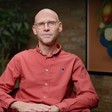
How the IPCC Assesses the Aviation Sector

Jonathan Preist
In this video, Jonathan Preist introduces the intricate relationship between aviation and climate change. He first explains the roles of UNFCCC and IPCC with respect to commercial aviation. He then introduces IPCC Working Groups and outlines the scope of their reports and finally lists some key takeaways concerning the aviation sector.
In this video, Jonathan Preist introduces the intricate relationship between aviation and climate change. He first explains the roles of UNFCCC and IPCC with respect to commercial aviation. He then introduces IPCC Working Groups and outlines the scope of their reports and finally lists some key takeaways concerning the aviation sector.

How the IPCC Assesses the Aviation Sector
10 mins 25 secs
Key learning objectives:
Understand the roles of the UNFCCC and the IPCC, in particular with respect to commercial aviation
Understand the roles of the different IPCC Working Groups and the scope of their reports
Outline the key aviation-related conclusions of the various elements of the IPCC Assessment Report 6
Overview:
Human activities have unequivocally caused global warming, impacting weather extremes. One of the sectors that shares a complex relationship with climate change is the aviation sector. But in order to construct a meaningful opinion on this relationship, it’s important to have a relevant scientific foundation. As the aviation sector is hard-to-decarbonise, it is both vulnerable and targeted. The IPCC and its 3 Working Groups outline the Physical Science behind this relationship as well as provide Mitigation and Adaptation options for the aviation sector.
What is the approach of the IPCC and its Working Groups?
- Working Group 1 - The Physical Science Basis. This examines the physical science underpinning past, present, and future climate change.
- Working Group 2 - Impacts, Adaptation and Vulnerability. This group assesses the impacts of climate change on ecosystems, biodiversity, and humans, their vulnerabilities and the capacities and limits of these systems to adapt. It also studies options for creating a sustainable future for all, through an equitable and integrated approach to mitigation and adaptation.
- Working Group 3 - Mitigation of Climate Change. This suggests mitigation options, technical feasibility, cost and the enabling conditions.
- Aviation contributes to climate change via a number of climate forcers (CO2, NOx and Condensation trails)
- In 2018, aviation was responsible for 3.8% of the Effective Radiative Forcing
- Condensation trails are only produced by the aviation sector and are the largest aviation climate forcer.
- The aviation sector is hard-to-abate or hard-to-decarbonise due to dependency on liquid fossil fuels and the timescales needed to modify infrastructure
- One less long-haul flight has the greatest ‘avoid’ potential for CO2 emissions reduction, equivalent magnitude as the annual emissions of a car. Indicating aviation is vulnerable to changes in society, which could potentially occur in rapid timescales
- The emissions from domestic aviation are accounted for in the commitments of states via their NDCs, however the CO2 emissions from International aviation, that accounts for approximately ⅔ of the total volume of traffic, are generally not included in the NDCs.
- Carbon pricing is identified as being effective in promoting implementation of low cost emissions reductions, however the IPCC underlines some limitations
- The impacts of extreme weather events are already between ‘moderate’ and ‘high’ levels
- Aviation is only at the early stages of adaptation planning

Jonathan Preist
There are no available Videos from "Jonathan Preist"

